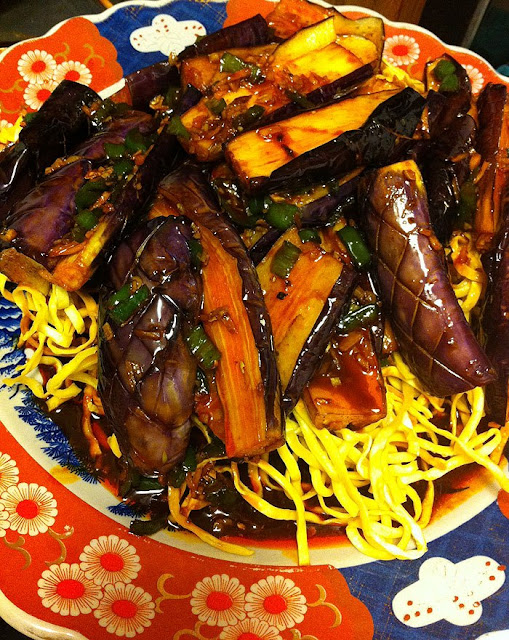We had a recipe for Szechuan Eggplant which required the eggplant to be soaked in water, deep fried, then soaked in water again, then simmered with a hot red sauce. Yes, it's worth it, but there must be a less arduous, less caloric way to create this dish. It's so good that I bought a dozen long eggplant to make more and experiment a bit.
Instead of frying, we decided to roast the eggplant -- even though this means we lose the lovely opalescent purply color of the skin. We scored the skin side; the flavor of the sauce doesn't penetrate the skin side, otherwise. Plus, not only does it not pull the flesh of the eggplant so it falls apart, but it's easier to chew the skin when it's already scored. Be careful not to overcook, or it goes mushy.
While roasting, chop up ginger, garlic, and scallions. Heat a wok and drizzle a tablespoon or so of vegetable oil. When the oil starts to smoke, add these vegetables and stir-fry till wilted and the mixture is bright green in color.
Add gochujan paste, soy sauce, red wine vinegar and water to loosen up the mixture.
When the eggplant are browned and still hot, toss with the sauce to coat. If you wish, you can simmer in the sauce for a few minutes, but we'd forgotten to do this step previously and it was still delicious. Finish with a drizzle of toasted sesame oil.
It's great on it's own as a main course offering with some rice or noodles. Or as a sandwich filling.








